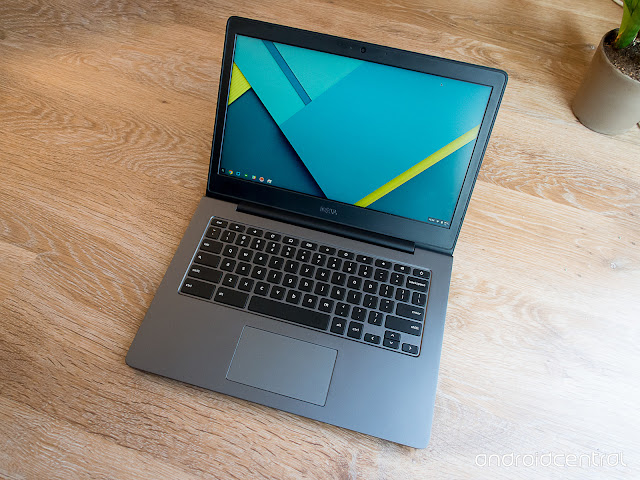Response to "You Don't Need a Mac Laptop"
 |
| Chromebook by Dell |
Dave related his story of transitioning out of the Apple software ecosystem to the world of web-powered applications and I have to admit, I have often felt the same. I'm not an Apple user, far from it, but I have been using Microsoft products for decades and have noticed the same trend. As more platforms move to cloud-powered web applications, the need to individually license and maintain software locally on your computer starts to evaporate. Google has been very instrumental in this movement, but they aren't the only ones. Everyone uses a computer a little differently, but I can absolutely see the case for a Chromebook if you don't need the complexity of a traditional Windows or Mac operating system or the expense of a high-powered laptop.
The options are plentiful if you are looking to go all-in and get a Chromebook. Options range from $250 entry level models, to $1000 high-end aluminum and glass flagships certain to give any Macbook Pro or Windows Ultrabook a run for their money in terms of build quality alone. There is another option, however, that not too many people seem to consider, and that is the Linux laptop.
If your goal is to save money and still have a nice-looking laptop, then you should be thinking of Linux for a number of reasons. First of all, it's free. Not just the operating system, but all the applications are part of a free and open-source product model, powered by a thriving community of volunteers and participating organizations all over the world. This means the software pool is always growing and improving, and anyone can participate in making it better. It is always secure and won't spy on you or mine your data without your knowledge, as everything you install is fully vetted by a diverse community that makes sure of this.
 |
| Learn more about the Solus Project |
 |
| Check out Peppermint OS |
I would also recommend any version of Ubuntu you find interesting, as it is the most widely adopted version of Linux available, making it very stable and fast on more hardware than most of the competition. Classic Ubuntu was the first version of Linux I tried and actually used as a daily driver and not just a tech tool or diagnostic. Lubuntu is excellent for lower powered systems and Xubuntu is great for people that prefer simplicity of design to bells and whistles. Kubuntu is also better than ever for a professional desktop that offers full support for font scaling and dark theme support. It might be important to note that there are plenty of other options as well, including a spin of Ubuntu with the Budgie desktop. You can also modify Solus to use the same version of KDE that Kubuntu features, or other popular desktop environments as well. The best way to get started is to try them for yourself and do some research on your own.
 |
| Check out Ubuntu running the Budgie Desktop |
 |
| Dell XPS bundled with Classic Ubuntu |
Let me know if this article inspired you to try a Linux laptop and if you did, what was your experience like? Let me know in the comments and we'll keep the conversation going.



Great article! Second time reading your post! Linux can run on a fraction of the processing power and memory needed by these heavy-duty operating systems.
ReplyDeleteCheck out Usession Buddy for relevant posts. Thanks!
Excellent post and wonderful blog, this sort of interesting posts I really like keep it up...
ReplyDeletefrom amazon
electronice
accessories
brand
amazon
Guys I want to tell you this best font website. That help to create many designs.
ReplyDeleteRoyalty Free Fonts
A new 'Titanium' header design concept is not perfect
ReplyDeleteThere are suunto 9 baro titanium some limitations titanium water bottle with a ford fusion titanium new 'Titanium' header design concept. You need a high-quality layout to ridge wallet titanium use. titanium pry bar
e374r0iwoys466 sex doll,dildos,glass dildos,dildos,sex toys,dog dildo,dildos,realistic dildo,realistic dildo t382a8zzwwi793
ReplyDelete